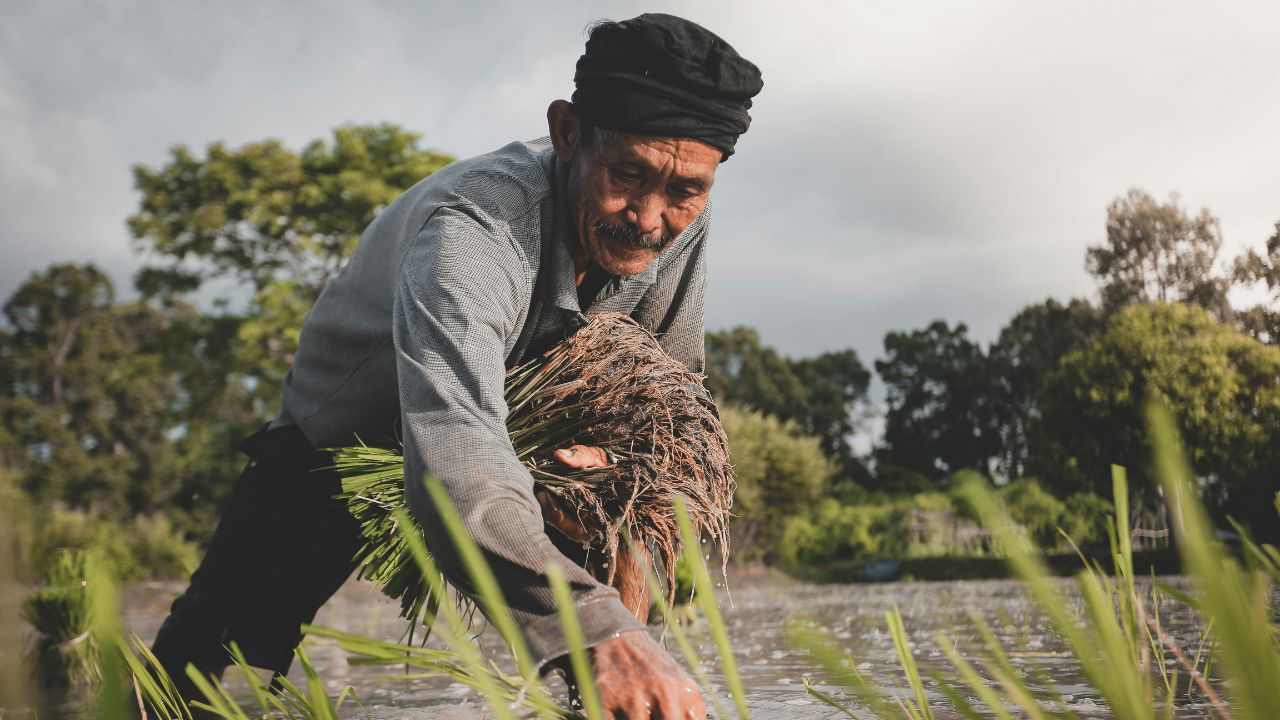
The area under cultivation in the current kharif sowing season has risen to 979.89 lakh hectares – or 89.4 per cent of the normal sown area – from 966.40 lakh hectares last year, thanks to better monsoon rains during the past fortnight. Kharif sowing activities will continue till the end of September.
According to data released by the agriculture ministry, the total sown area of key kharif crops, especially paddy, pulses, oilseeds, sugarcane and cotton is up 1.4 per cent year-on-year. Better sowing trends will lead to higher output and thereby help ease concerns over rising food prices.
The official figures showed that the area under paddy, or rice, the main kharif crop, increased 13.61 per cent to 331.78 lakh hectares from 318.16 lakh hectares on August 9, 2023. Farm experts say this rise in paddy cultivation is encouraging due to the crop's important role in food security and also its role in the diet of millions of Indians.
Likewise, the acreage for pulses rose 7.35 per cent to 117.43 lakh hectares, accounting for 86.4 per cent of the normal sown area compared to 110.08 lakh hectares last year, as per the data. The normal sown area of pulses is 136.02 lakh hectares. Tur (arhar) alone accounted for 44.57 lakh hectares. Sowing of summer mung rose 2.9 per cent as the area increased to 32.78 lakh hectares from 29.89 lakh hectares a year earlier. But, on the other hand, the sowing of urad fell marginally to 27.76 lakh hectares from 28.83 lakh hectares last year.
Growth in the cultivation of pulses is significant in view of the country's efforts to boost production the protein-rich crops to meet domestic demand. A better sowing season for pulses could cause prices to fall significantly by early 2025, reducing food inflation and easing the burden on consumers, experts opined.
India imports edible oils and pulses to meet domestic demand. Hence, higher acreage for pulses and oilseed crops could ensure better harvest, provided weather conditions remain favourable until the harvest. The IMD has forecast fairly widespread rainfall across Northeast India and the Western Himalayan region in early August. This could influence late-season sowing decisions.
The Consumer Affairs Ministry expects the price of tur dal to drop 28 per cent to Rs 120 per kg by then from Rs 167 per kg now. Similarly, the area under oilseeds grew 1.52 per cent, reaching 183.69 lakh hectares from 182.17 lakh hectares. This is likely to enhance the production of edible oils, thus reducing dependence on imports and supporting the domestic industry.
The area under groundnut cultivation rose by 3.51 per cent to 45.42 lakh hectares, while the area under soybean sowing increased to 124.69 lakh hectares from 122.89 lakh hectares, marking a growth of about 2 per cent. Sunflower sowing area also grew from 0.62 lakh hectares to 0.69 lakh hectares during the period under review.
But, the area under millets, or coarse grains, shrank 2 per cent to 169.52 lakh hectares from 171.36 lakh hectares a year earlier. According to the data, the sowing area for sugarcane remained stable at 57.68 lakh hectares. Cotton acreage fell by 10.74 per cent to 110.49 lakh hectares so far this kharif season against 121.24 lakh hectares last year.
















